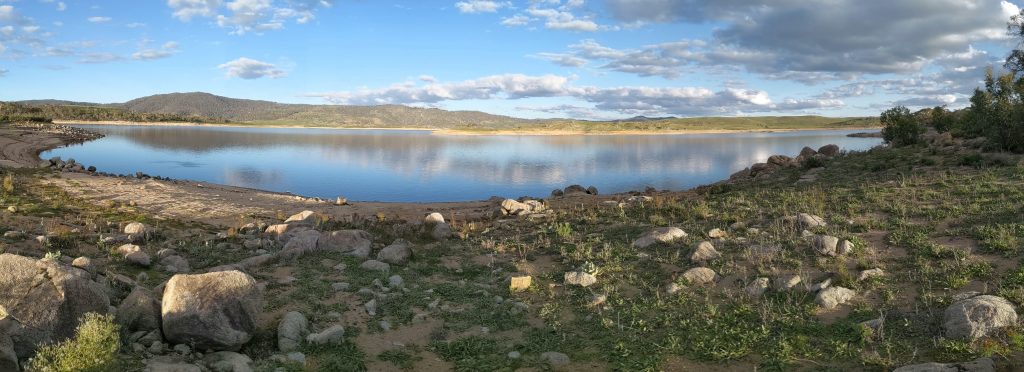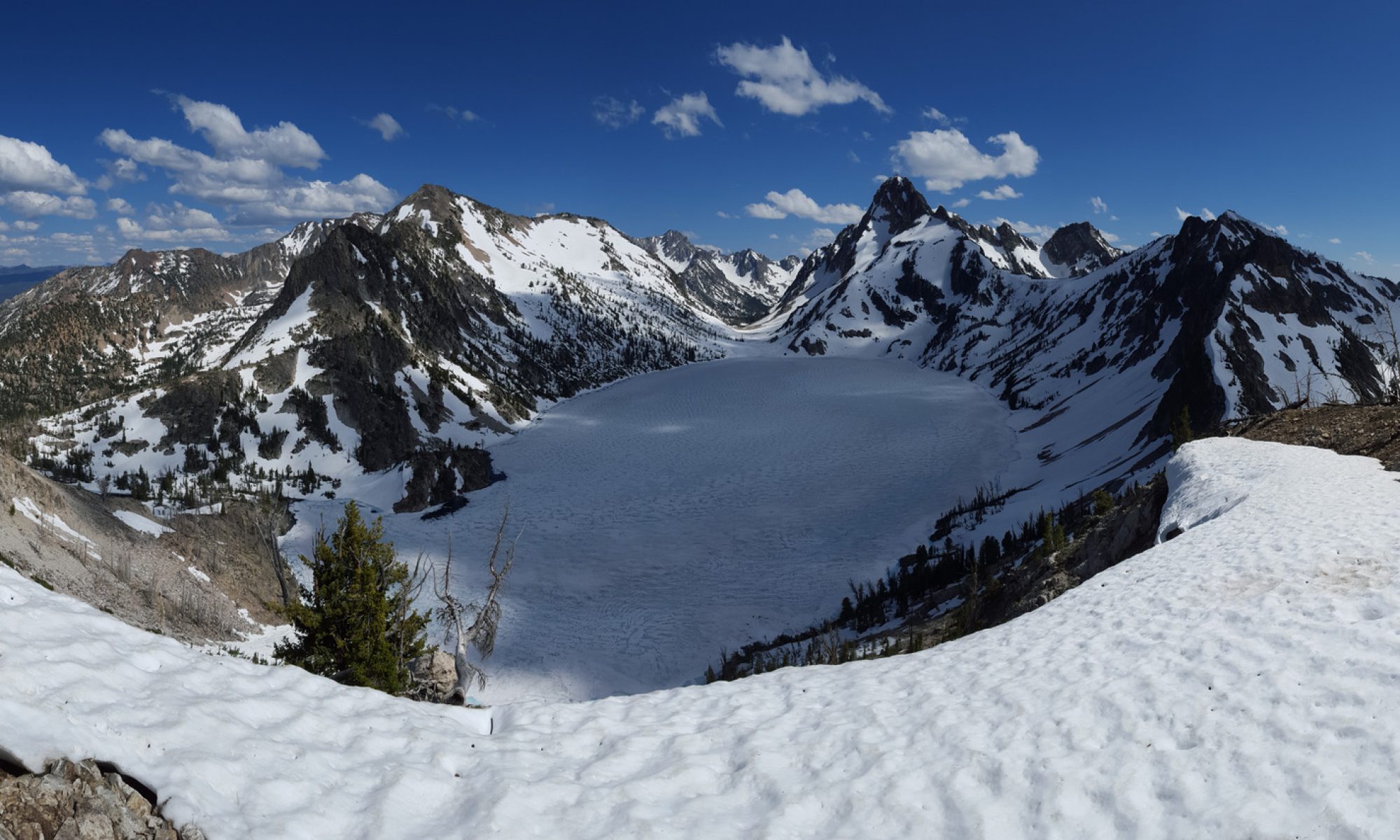Scavenging is the process of animals consuming dead animals (a.k.a. carrion). It is a natural part of every ecosystem and is a pathway for rare and rich nutrients to be recycled back into the environment. Because carrion is rich in nutrients and doesn’t fight back, it supports a HUGE amount of biodiversity. Additionally, scavenger’s actions to remove carcasses reduce the chances of disease transmission that occur near carrion. Therefore, scavengers are a necessary part of all ecosystems and maintain the important “underside” to the circle of life.
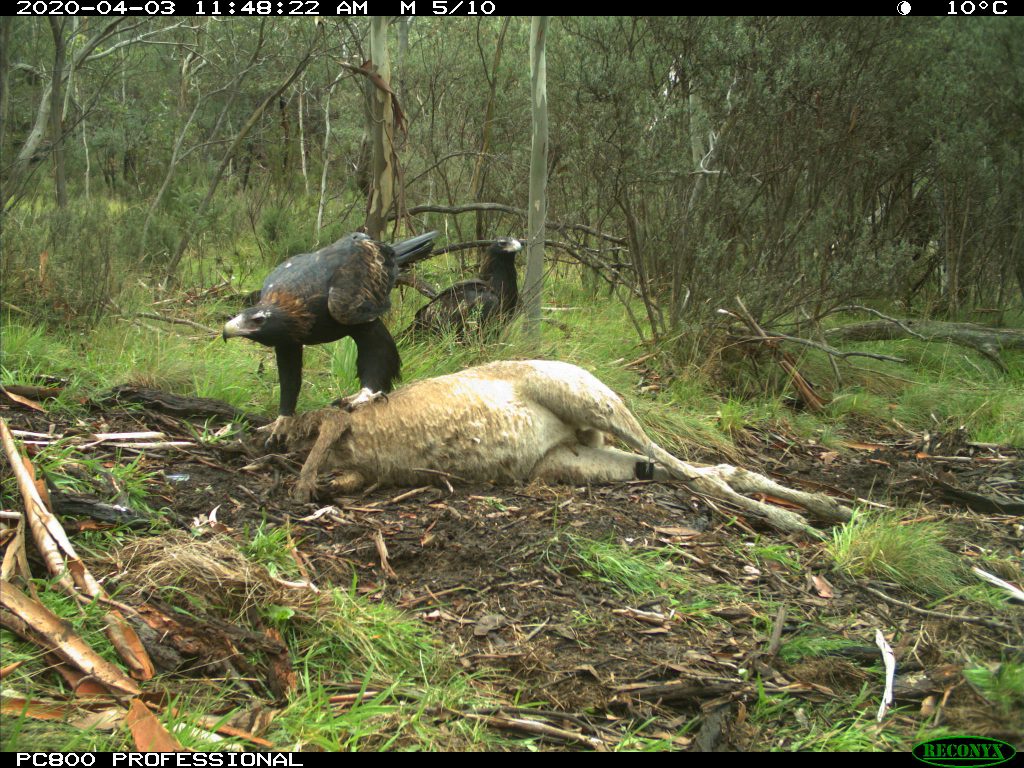
This is particularly important in Kosciuszko National Park in the Australian Alps which is faced with a problem of a surplus of carrion. Unfortunately, feral deer and horses are establishing themselves within this fragile and unique ecosystem and leaving behind more carrion than Kosciuszko NP can efficiently process. That’s where this research project comes in. As a part of the Global Ecology Lab, I studied decay rates of carrion and the accompanying scavenger assemblage to best understand effects that can accelerate decomposition.
To accomplish that goal, I use an experimental exclusion of access to carrion from the vertebrate and insect scavenger guilds to characterise their contributions to carcass persistence. I set two different types of cages around paired carcass sites to create a gradient of access among scavenger guilds in the form of three treatments (1: open / no exclusion, 2: vertebrate exclusion, and 3: vertebrate + insect exclusion). In total, this project has generated almost a million images from remote camera traps, 29,000 sampled insects, and close to 400 monitoring days. This has truly been an immense project. To all those who are interested in this research I hope you find this enjoyable and informative.
Why Scavenging Matters
We’ve all watched movies like “The Lion King” and should be aware that life on Earth is cyclical, meaning that within ecosystems nutrients and energy are constantly moving from one state to another. Without plants, animals (microbes included), and fungi moving different aspects of detritus around, living individuals would quickly be overwhelmed with inaccessible nutrients.
Additionally, scavengers reduce disease transmission in the environment as they consume carrion by reducing the window of opportunity pathogens have to spread to facultative visitors. In many cases, vultures scavenging on large mammalian carcasses have been attributed to a reduction to the spread of anthrax and rabies.
Studying an ecosystem’s scavenger assemblages can also give a glimpse into its health. By understanding the hierarchy and connections species have at carrion, you can identify how intact an ecosystem’s food-web is. Ecosystems with low scavenging diversity may also have lower nutrient cycling.
Here, in Kosciuszko National Park, insects are king! Kosciuszko National Park has a low diversity of vertebrate scavengers that have little impact on decomposing carrion allowing insects to outcompete them for resources. This is quite different to other ecosystems that have many vertebrate scavengers that can do compete with insects for resources. In those ecosystems with a diversity of scavengers, there is often functional redundancy as many different species operate in tandem to remove carrion. This creates resilience as carrion removal can still occur if a scavenger guild is suppressed. However, at Kosciuszko, the lack of vertebrate scavengers means the park is more reliant on insect scavengers to process carrion. This makes the ecosystem’s capacity to process carrion susceptible to changes that impact insects as the vertebrate guild fails to pick up the slack.
Alpine Scavengers

This project collected over 29,000 insects which were all hand-counted. To streamline that effort, I built a small web-based tool to categorise and format the abundance data that was derrived from identified insects. You can take a look at the tool here.
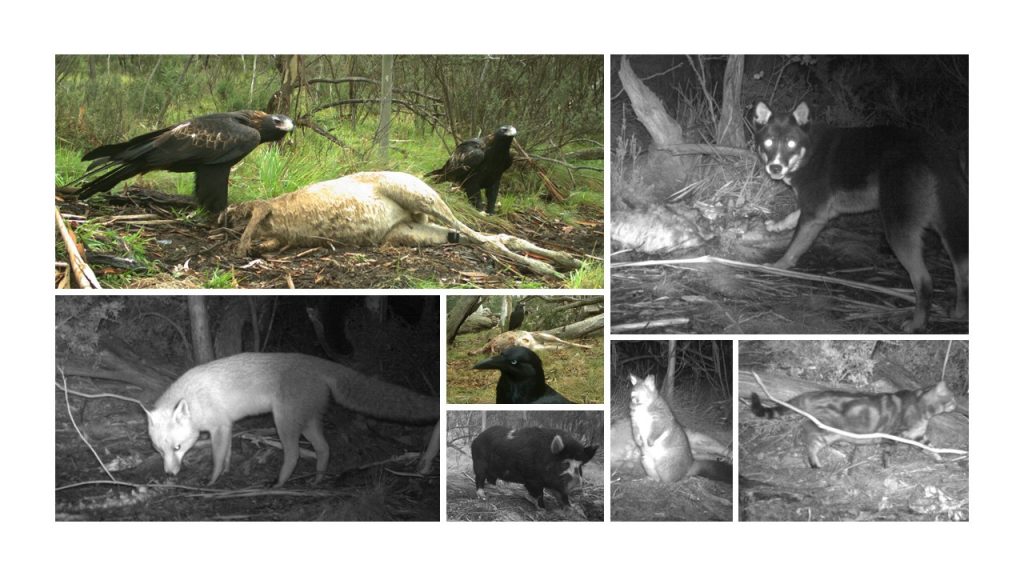
Location
This project was conducted along a lovely piece of land along Island Bend Firetrail and Guthega road. The transect is uninterupted patch of natural habitat with a reprisentative community of subalpine scavengers.
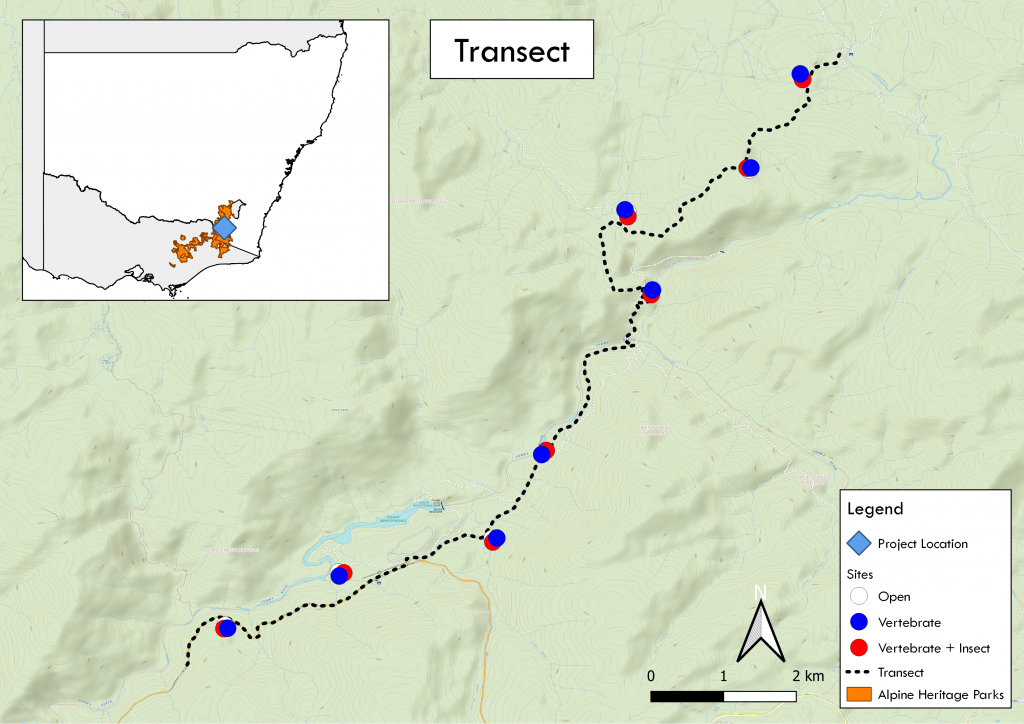
Interest and Involvement
I will be updating my twitter and blog periodically with updates so stay tuned!
For those who are curious about my ongoing research send a tweet to @ChrisEFust and I’ll be happy to oblige!
